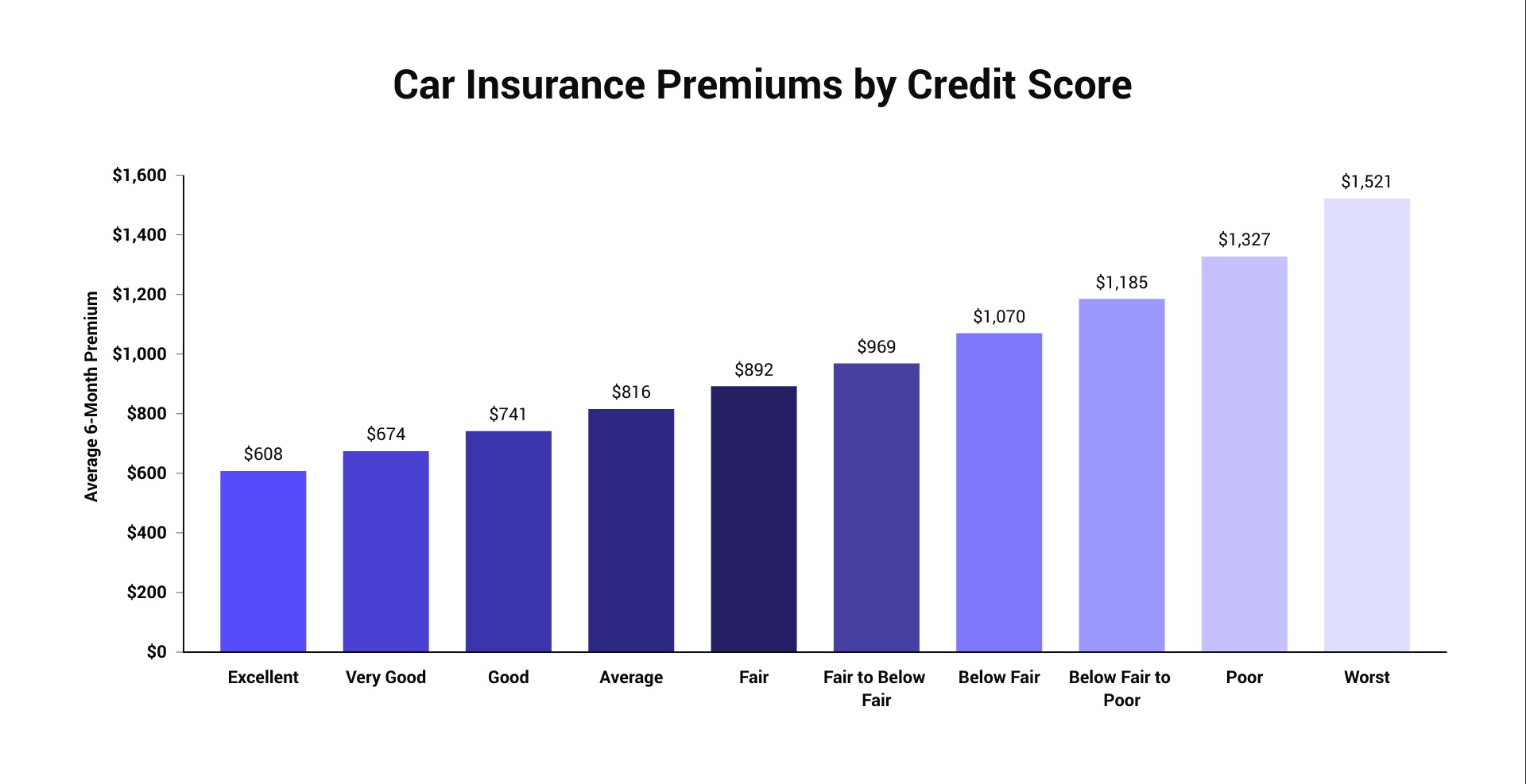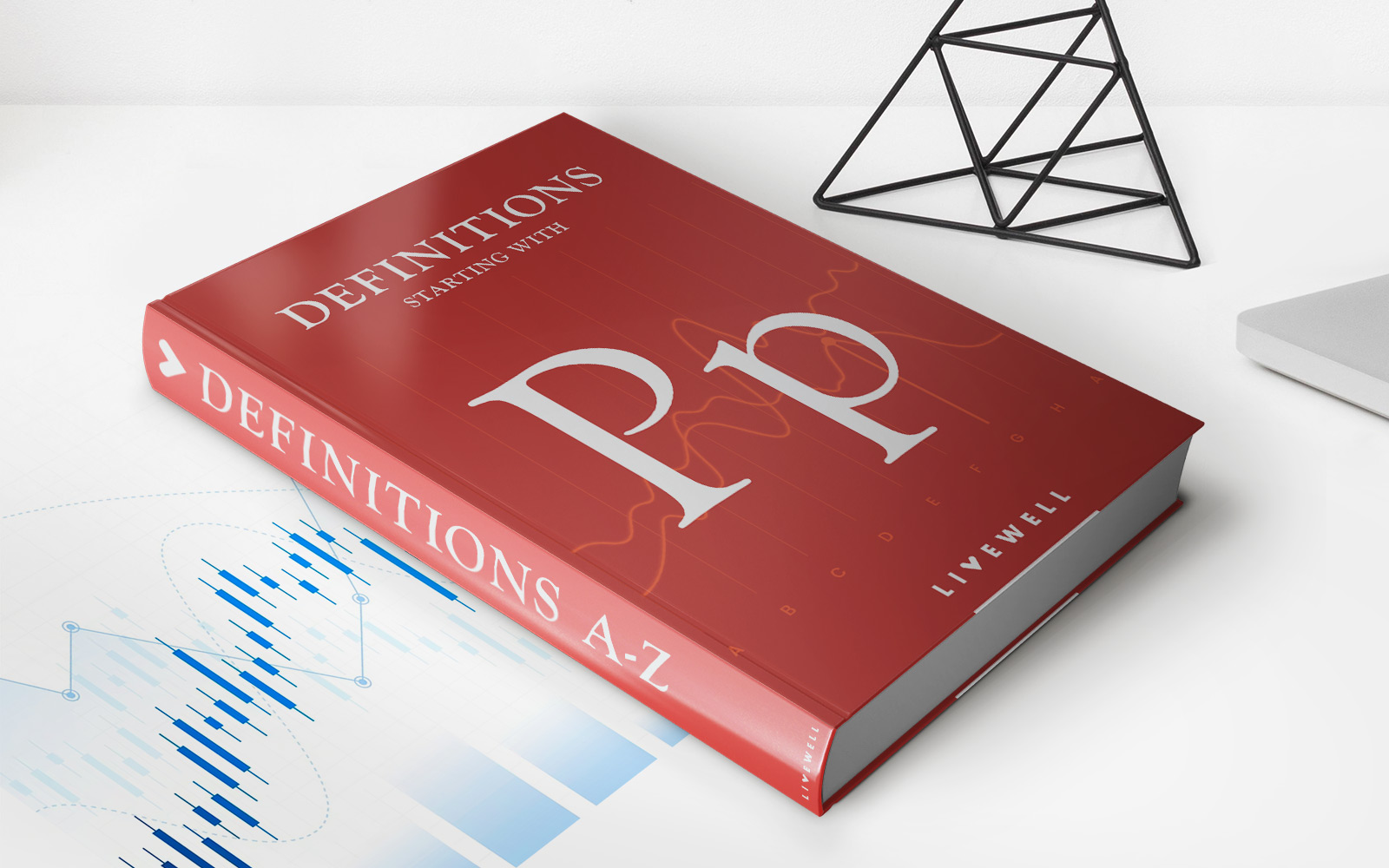

Finance
How Much Is Horse Insurance Per Month?
Modified: March 1, 2024
Learn about the cost of horse insurance per month and how it can fit into your finance plan. Get the protection your horse deserves with affordable insurance options.
(Many of the links in this article redirect to a specific reviewed product. Your purchase of these products through affiliate links helps to generate commission for LiveWell, at no extra cost. Learn more)
Table of Contents
Introduction
As a horse owner, protecting your four-legged companion is of utmost importance. Just like any other valuable asset, horses are susceptible to accidents, illnesses, and other unforeseen events. Horse insurance provides peace of mind by covering the costs associated with veterinary medical treatment, surgical procedures, and even mortality in the unfortunate event of a horse’s death.
However, one common question that arises among horse owners is, “How much does horse insurance cost per month?” Well, the cost of horse insurance can vary significantly depending on several factors, including the horse’s age, breed, use, and intended coverage. Understanding these factors and the different types of horse insurance coverage available will help you make an informed decision when selecting the right policy for your horse.
In this article, we will explore the various factors that can influence the cost of horse insurance, the types of coverage options available, and provide insights on finding affordable horse insurance that meets your specific needs and budget.
So, if you’re ready to embark on this journey to safeguard your equine companion, read on to discover everything you need to know about horse insurance costs and coverage.
Factors that affect horse insurance costs
When it comes to determining the cost of horse insurance, several factors come into play. Insurance providers take these factors into consideration to assess the risk involved in insuring your horse. Here are the key factors that can affect horse insurance costs:
- Age of the horse: Generally, younger horses have lower insurance premiums compared to older horses. This is because younger horses are less likely to have medical conditions or require extensive veterinary care.
- Breed and use of the horse: Certain horse breeds and disciplines are associated with higher risks. For example, racehorses or horses involved in high-risk activities like eventing or jumping may have higher insurance costs due to the increased likelihood of accidents and injuries.
- Medical history and pre-existing conditions: Horses with a history of health issues or pre-existing conditions may have higher insurance premiums. Insurance providers may also exclude coverage for specific conditions or treatments related to the horse’s medical history.
- Value of the horse: The value of your horse plays a significant role in determining insurance costs. Higher-value horses are more expensive to insure due to the increased financial risk involved in case of injury, illness, or death.
- Geographical location: Insurance rates can vary depending on where you live. Factors such as the availability of veterinary services, the prevalence of certain diseases, and regional laws and regulations can impact insurance costs.
- Intended coverage: The type and extent of coverage you choose will also affect the insurance premium. Basic coverage for medical expenses will have a lower cost compared to comprehensive coverage that includes mortality, loss of use, and liability coverage.
It’s important to note that these factors can vary between insurance providers, so it’s advisable to get quotes from multiple insurers to compare costs and coverage options.
By understanding the factors that can influence horse insurance costs, you can make informed decisions when selecting the coverage that best suits your horse’s needs and your budget. In the next section, we will explore the different types of horse insurance coverage available.
Types of horse insurance coverage
When it comes to horse insurance, there are several types of coverage options available to suit the specific needs of horse owners. Understanding these different types of coverage will help you choose the right policy for your equine companion. Here are the main types of horse insurance coverage:
- Medical and surgical coverage: This type of coverage is essential for covering veterinary expenses related to accidents, illnesses, surgeries, and routine medical care. It typically includes diagnostic tests, medications, surgeries, and treatments necessary to restore your horse’s health. Some policies may also cover alternative therapies such as chiropractic or acupuncture.
- Mortality coverage: Mortality insurance provides financial compensation in the unfortunate event of your horse’s death, whether due to illness, injury, or natural causes. The coverage amount is usually based on the horse’s insured value and can help mitigate the financial loss associated with the loss of your horse.
- Loss of use coverage: Loss of use coverage compensates horse owners if their horse becomes permanently unfit for its intended use. For example, if your horse sustains an injury that renders it incapable of competing or performing its usual tasks, this coverage can provide financial compensation or help cover the costs of a replacement horse.
- Liability coverage: Liability coverage protects horse owners from legal and financial liabilities that may arise if their horse causes injury or property damage to a third party. This is particularly important if you frequently participate in activities such as trail riding, horse shows, or offering riding lessons.
- Transit coverage: Transit coverage provides protection for your horse during transportation, whether it is being transported locally or internationally. This coverage helps safeguard against the risk of accidents, injuries, or other unforeseen events that may occur while your horse is in transit.
It’s important to carefully review the coverage details, limitations, and exclusions of each policy to ensure it aligns with your specific needs. Additionally, some insurance providers may offer customizable coverage options, allowing you to tailor your policy to fit your requirements and budget.
Now that we’ve explored the types of horse insurance coverage available, let’s move on to the next section to understand the average cost of horse insurance per month.
Average cost of horse insurance per month
When it comes to determining the average cost of horse insurance per month, it’s important to note that pricing can vary significantly depending on various factors, such as the horse’s age, breed, value, use, and the coverage options selected. However, to provide a rough estimate, monthly horse insurance premiums can range from $50 to $200 or more.
Basic medical and surgical coverage typically starts at around $50 per month for younger, healthy horses. As the horse gets older or if they have a history of medical issues, the premium may increase. The value of the horse also plays a role, as more expensive horses often require higher coverage limits, resulting in higher premiums.
Mortality coverage, which insures the horse’s value in case of death, usually costs around 2-4% of the horse’s insured value per year. This can be broken down into a monthly cost, depending on the payment plan chosen. For example, if a horse is insured for $10,000, the annual mortality premium could range from $200 to $400, which would equate to roughly $16 to $33 per month.
Loss of use coverage, which compensates the owner if the horse becomes permanently unfit for its intended use, generally costs around 4-6% of the insured value per year. Again, this can be divided into monthly payments. For a horse insured for $10,000, the annual loss of use premium might range from $400 to $600, or approximately $33 to $50 per month.
It’s important to keep in mind that these figures are just estimates and can vary depending on the specific insurance provider, the coverage options selected, and the individual horse’s characteristics. Additionally, it’s advisable to obtain personalized quotes from multiple insurers to compare costs and coverage in order to find the best policy for your horse’s needs and your budget.
Now that we have an understanding of the average cost of horse insurance per month, let’s move on to the next section to explore tips for finding affordable horse insurance.
How to find affordable horse insurance
While horse insurance is an essential investment to protect the health and well-being of your equine companion, it’s understandable that you may want to find affordable coverage options. Here are some tips to help you find affordable horse insurance:
- Shop around and compare quotes: One of the most effective ways to find affordable horse insurance is to gather quotes from multiple insurance providers. Compare coverage options, premiums, deductibles, and any additional fees or discounts offered. This allows you to find the best value for your money.
- Consider increasing deductibles: Choosing a higher deductible can help lower your monthly premiums. Just be sure you can comfortably afford the deductible amount in case a claim arises.
- Opt for a specific coverage package: Insurance providers often offer packaged coverage options that include medical and surgical coverage, mortality coverage, and liability coverage. Choosing a package can be more cost-effective than purchasing each type of coverage separately.
- Maintain a healthy horse: Keeping your horse in good health can lower the risk of medical issues and potential insurance claims. Regular veterinary care, proper nutrition, exercise, and preventive measures, such as vaccinations and deworming, can contribute to a healthier horse and potentially lower insurance costs.
- Consider the horse’s use: If you engage in lower-risk activities with your horse, such as recreational riding or casual shows, it may be possible to find affordable coverage tailored to those specific activities.
- Ask for discounts: Inquire about any available discounts that insurers may offer. Some insurers provide discounts for multiple horses insured, club memberships, or certain safety measures implemented, such as installing security cameras in your barn.
- Review policy details: Carefully read the policy documents and understand the coverage details, exclusions, limitations, and any additional fees. Ensure that the policy aligns with your specific needs, and don’t hesitate to ask questions to clarify any uncertainties.
Remember, finding affordable horse insurance shouldn’t mean compromising on the coverage your horse needs. It’s important to strike a balance between cost and adequate protection for your equine companion.
Now that we have discussed tips for finding affordable horse insurance, let’s move on to the next section to explore questions you should ask when purchasing horse insurance.
Questions to ask when purchasing horse insurance
When purchasing horse insurance, it’s crucial to ask the right questions to ensure you fully understand the coverage, terms, and conditions of the policy. Here are some important questions to consider:
- What does the policy cover? Ask for a detailed explanation of the coverage provided by the policy. Understand what is included, such as medical expenses, surgeries, mortality, loss of use, and liability coverage. Additionally, inquire about any specific exclusions or limitations that may apply.
- What is the claims process? Understand how the claims process works, including how to file a claim, the required documentation, and the timeline for reimbursement. Ask about any deductibles or co-pays that may apply to your policy.
- Are there any waiting periods? Inquire about any waiting periods specified in the policy. Waiting periods are typically applicable when purchasing a new policy or adding specific coverage options. Knowing these waiting periods will help you plan for coverage effectively.
- What is the process for policy renewal? Understand how the policy renewal works and if there are any changes in coverage or pricing that occur during the renewal process. It’s essential to know if the renewal is automatic or if you need to take any actions to maintain coverage.
- Can the policy be customized to my horse’s needs? Ask if there are any customization options available to tailor the policy to your horse’s specific needs. This can include adjusting coverage limits, adding or removing specific coverage options, or applying specific endorsements.
- What is the insurer’s reputation and financial stability? Research the insurer’s reputation and financial stability. Look for customer reviews and ratings to determine if they have a solid track record of providing reliable coverage and promptly processing claims.
- Does the policy include any additional benefits or resources? Inquire about any additional benefits or resources included with the policy. This could include access to 24/7 helplines, online resources, or discounts on other equine-related services or products.
By asking these questions, you can gain a thorough understanding of the policy terms and ensure that the coverage aligns with your expectations and needs. It’s always advisable to consult with an insurance agent or representative who specializes in equine insurance to answer any specific questions or concerns you may have.
Now that we have covered important questions to ask when purchasing horse insurance, let’s move on to the final section to explore some tips for obtaining the best horse insurance coverage.
Tips for getting the best horse insurance coverage
When it comes to obtaining the best horse insurance coverage for your equine companion, it’s crucial to consider several factors and make informed decisions. Here are some tips to help you secure the best horse insurance coverage:
- Evaluate your horse’s needs: Assess your horse’s age, breed, use, value, and any pre-existing conditions. Understanding your horse’s specific needs will help you determine the appropriate coverage options required.
- Research reputable insurance providers: Take the time to research and compare insurance providers that specialize in equine insurance. Look for companies with a strong reputation, good customer reviews, and a track record of efficiently processing claims.
- Get multiple quotes: Obtain quotes from multiple insurance providers to compare coverage options and premiums. This will help you find the best value for your money and ensure you are not overpaying for coverage.
- Review policy exclusions and limitations: Carefully review the policy’s exclusions and limitations to understand what is not covered. Ensure that the policy aligns with your horse’s specific needs and that any specific concerns or potential health issues are addressed.
- Consider working with an equine insurance specialist: Seek advice from an insurance agent or broker who specializes in equine insurance. They can provide guidance, help you navigate through the complexities of coverage options, and find the best policy for your horse.
- Review the policy’s terms and conditions: Read and understand the policy’s terms and conditions before purchasing. Pay attention to details such as coverage limits, deductibles, renewal policies, cancellation procedures, and any additional fees that may apply.
- Ensure adequate coverage limits: Evaluate the appropriate coverage limits based on your horse’s value, intended use, and potential risks. Avoid underinsuring your horse, as this may result in financial difficulties in the event of a claim.
- Consider additional endorsements: Inquire about any additional endorsements or riders available to enhance your policy’s coverage. These may include coverage for specific activities, higher liability limits, or access to specific equine-related services.
- Regularly review and update your policy: Keep your policy up to date by periodically reviewing your horse’s needs and reassessing your coverage. Make any necessary adjustments to ensure that your horse is adequately protected.
By following these tips, you can make well-informed decisions when selecting horse insurance coverage that meets your horse’s specific needs and provides you with peace of mind in case of unforeseen events or emergencies.
Now that we have explored tips for obtaining the best horse insurance coverage, let’s summarize our findings in the concluding section.
Conclusion
Protecting your horse with the right insurance coverage is a crucial investment to ensure their health and well-being. Understanding the factors that affect horse insurance costs, the types of coverage available, and how to find affordable options will help you make informed decisions when selecting the best policy for your equine companion.
Factors such as the horse’s age, breed, use, and medical history can influence insurance costs. By evaluating these factors and considering options such as medical and surgical coverage, mortality coverage, loss of use coverage, liability coverage, and transit coverage, you can tailor the policy to your horse’s specific needs.
When it comes to affordability, shopping around for quotes, comparing coverage options, increasing deductibles, and maintaining a healthy horse can help you find a policy that fits your budget without compromising on essential coverage.
Before finalizing a policy, ask relevant questions about coverage, the claims process, waiting periods, policy renewal, customization options, and additional benefits. Consulting with an equine insurance specialist can provide valuable guidance throughout the process.
Lastly, regularly review and update your policy to ensure it aligns with your horse’s evolving needs. By following these tips and making well-informed decisions, you can obtain the best horse insurance coverage that provides you with peace of mind and financial security.
Remember, horse insurance is a valuable investment that safeguards your equine companion, allowing you to focus on the joys of horse ownership without the worry of unforeseen expenses. So, take the time to explore your options, select the right coverage, and enjoy your time with your beloved horse.














